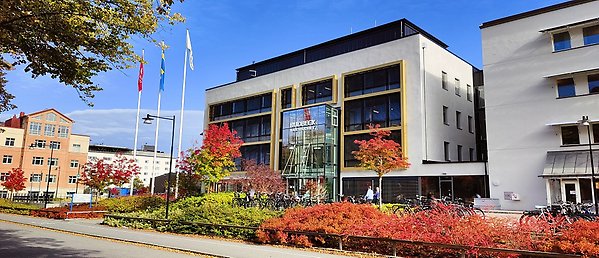[The Svedberg seminar] – Nucleosomes for all: histone-based chromatin in noneukaryotic organisms
January 22, 2024 @ 15:15 – 16:15 CET
Karolin Luger
Professor
University of Colorado, USA
PLEASE NOTE: This seminar will be given both in Uppsala, BMC at January 22:nd and additionally in Solna at January 23, 14:00, George and Eva Klein, Biomedicum, Solnavägen 9, Stockholm
Bio
Karolin Luger is a distinguished professor and the Jennie Smoly Caruthers Endowed Chair of Biochemistry at the University of Colorado in Boulder, and an investigator for the Howard Hughes Medical Institute. She is recognized for her work on nucleosome structure and interacting proteins. The lab also studies the DNA damage recognition protein PARP1 and its interactions with chromatin, with the aim of developing novel PARP inhibitors for cancer therapy. The group explores histone-based DNA organization in non-eukaryotic organisms, to gain insight into the evolutionary origin of the nucleosome.
Luger was born in Austria and obtained a degree in Biochemistry from the University of Innsbruck. She obtained her Ph.D. in biophysics from the Biocenter Basel, then moved to a postdoc at the ETH Zuerich in 1990. She started her independent career at Colorado State University in 1999, and in 2015 moved to the University of Colorado at Boulder. She is a fellow of the Biophysical Society, a member of the National Academy of Science; the American Academy of Arts and Science; and EMBO. In 2023, she was awarded the World Laureate Association (WLA) Prize in Life Science or Medicine for her groundbreaking work on nucleosome structure.
Nucleosomes for all: histone-based chromatin in noneukaryotic organisms
All eukaryotes organize their DNA into nucleosomes, consisting of an octamer of the four core histone proteins H2A, H2B, H3, and H4, around which 147 base pairs of DNA are wrapped in two tight superhelical turns. Histones were an early acquisition in eukaryogenesis that allowed for massive genome expansion, a prerequisite for the complexity observed in modern-day eukaryotes. Histones are the targets of epigenetic modifications through the incorporation of histone variants and histone post-translational modifications, and require elaborate assembly and remodeling machinery for gene regulation. Who provided the chromatin starter kit to the early eukaryote? Many archaea organize their genomes with single, non-diversified histones that form slinky-like structures, without the requirement for additional machinery to assemble and disassemble nucleosomal structures. A subclass of giant viruses (ancient double-stranded DNA viruses that infect amoebae) also encode their own histones, and these form meta-stable nucleosome-like structures with distinct features. Unexpectedly, we recently discovered that histones are sporadically present in the bacterial domain of life. In a stunning reversal of ‘histone logic’, these small histones encase straight DNA rather than wrapping it around them. As such, histones are no longer a prerogative of eukaryotes but appear to be an ancient DNA packaging principle that has adapted to varying constraints in different domains of life.
Host: Sebastian Deindl sebastian.deindl@icm.uu.se UU, Simon Elsässer simon.elsasser@scilifelab.se, KI

